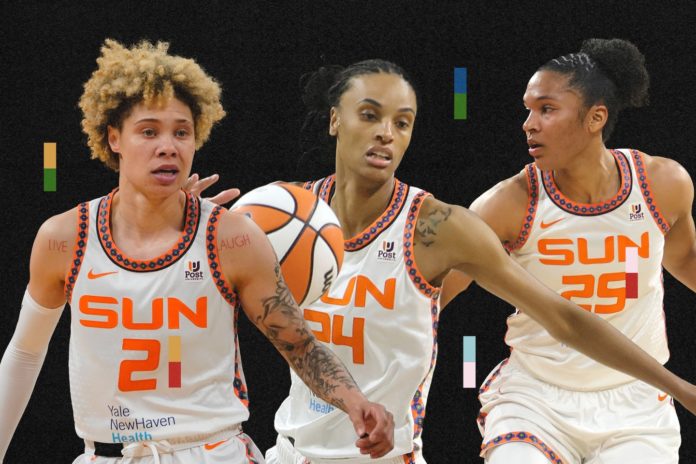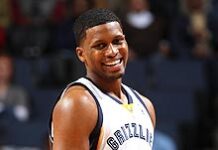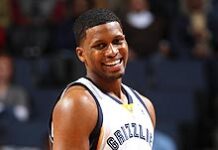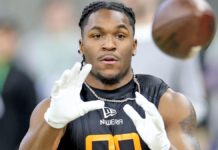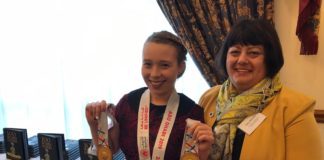
And it’s not just the WNBA that sees intracommunity romance: NWSL stars and teammates Ashlyn Harris and Ali Krieger are married, while Australia-U.S. national soccer team rivals Sam Kerr and Kristie Mewis are dating (made famous by the “They’re lesbians, Stacey” meme). In women’s hockey, three different pairs of former Team USA and Team Canada players are married — Meghan Duggan and Gillian Apps; Julie Chu and Caroline Ouellette; and Kathleen Kauth and Jayna Hefford.
It’s a dynamic that is exclusive to women’s sports culture, sometimes making team dynamics complicated. But it’s not just gossip that makes these romances of interest — this kind of insular, interconnected relationship web is very common in lesbian and lesbian-adjacent culture at large.
To put it into historical context, it’s important to understand the evolution of lesbian subculture. “In the late 1960s and into the 1970s, lesbian feminists were really strong advocates of non-monogamy — and we tend to associate non-monogamy with gay men, but because there was so much overlap between lesbian activist communities and socialist politics and feminist politics, there was a powerful ethos of non-possession,” explains Jane Ward, professor of gender and sexuality studies at the University of California at Riverside and the author of “The Tragedy of Heterosexuality.”
“To really love someone meant to give them their freedom — and that included their sexual freedom — so you couldn’t own someone’s sexuality, you couldn’t possess someone,” she says.
Continuing into the 1980s and 1990s, Ward says, there was an emphasis on chosen families, because so many queer people were alienated and ostracized from their families of origin.
“This whole project of care and family-making meant there was a norm in lesbian subculture where just because you break up doesn’t mean you should remove that person from your life,” she says.
Combined with the small community creating a sense of sexual scarcity and a notion that the universe of possibilities is smaller for lesbians than for straight people, these factors have all converged to shape the dynamic we see in the women’s sports community.
It’s just another way that women’s sports spaces are reflective of queerness: They center certain aspects of queer culture, making them safer places to be out, and making them unique among an often homophobic and heteronormative men’s sports culture — even as the media and culture at large wants to heterosexualize women’s sports. For many years, women’s sports has struggled against the stereotype that all women athletes are lesbians, while also facing the reality that many of them are.
The intra-league romantic relationships are not a new phenomenon, even if they are more visible now than they have been in the past. The All-American Girls Professional Baseball League, the World War II-era league that inspired the 1992 film “A League of Their Own,” did everything they could to ensure that their players were perceived as straight, including implementing a “no fraternization” policy designed to discourage player relationships. Even still, they existed, and women were sent home from the league or traded away if those relationships were discovered.
In the 1970s and ’80s, the National Women’s Football League boasted a variety of teammate romances, locker room hookups and flings among rivals. As I discovered while reporting “Hail Mary,” my book on the league, many of the players on these teams would leave practice and hang out with each other at their local lesbian bar; they were teammates, but also friends who existed in shared community. At the time, though, it wasn’t safe to be publicly out, so most of the women never discussed their sexual orientation in the media.
Today, queerness is much more socially accepted, and people’s livelihoods are not threatened in the same way. In leagues like the WNBA, where there are so many queer players, the sheer numbers make it much safer — and inevitable — for many athletes to no longer hide their relationships from the public.
These visible relationships serve to normalize queerness on a large, public scale. And they also introduce mainstream culture to a different way of thinking about relationship and community, one where exes frequently coexist and interact with one another — something familiar to any person who has ever walked into a lesbian bar and seen their friend making out with their ex while another ex is sipping a drink at the next table.
“One of the hallmarks of heteronormativity is that possession piece, and people often have really acrimonious separations where they go from loving someone to hating them, totally removing someone from their lives,” Ward says. “If straight people are going to glean something from this, it’s: What’s going on in straight culture that prevents straight people from being able to be friends with someone after a separation?”
But the benefits of queer existence should not just serve as teaching moments for straight fans; these relationships are, first and foremost, a beacon to queer fans. Sports — particularly men’s sports — is often a place where queer folks don’t feel safe. But when you know there are large numbers of athletes on the field who are gay, it signals to queer fans that the space is for them.
In fact, there are some women’s sports fans who got into the league because of how openly and visibly queer the players were. One of those fans was Mari Vázquez, who started following the WNBA during the 2020 season after reading a post on the queer women’s website Autostraddle about the gayest teams (disclosure: I wrote that post).
“I didn’t have a strong sense of community. I felt disconnected from queer spaces,” Vázquez explains. “I wanted to find a community again, and because I encountered it on Autostraddle, it gave me an entry point into people that were interested in the same things that I was.” Vázquez says she doesn’t just follow the on-the-court action, but also keeps up on who is dating whom.
The dynamic, of course, is not without complications. A professional athlete is also at work when they are on a team, and so they are dating their co-workers, making for workplace dynamics that can be challenging.
“There was some hesitation, because anytime you’re dating people in the workplace, it doesn’t matter what profession it is, there’s obviously some things that come with it,” Jasmine Thomas, who is engaged to her Connecticut Sun teammate Natisha Hiedeman, told Sports Illustrated. “You don’t want to mess up chemistry. You don’t want to mess up anything that has to do with what’s going on on the court.”
It’s a conversation that Vázquez says she’s had with her partner, who is a cisgender man who grew up playing sports.
“He’ll be like, ‘I don’t understand why you would want to date someone on your team or how that affects team dynamics or from a coaching perspective,’” Vázquez says. “But that is so normalized in queer women’s spaces and that element of the culture has emerged in the league, which is unsurprising, because it’s a queer space.”
And that, for fans like Vázquez, is a huge part of the appeal: “There’s an element of that that’s a fun moment of recognition for me.”

